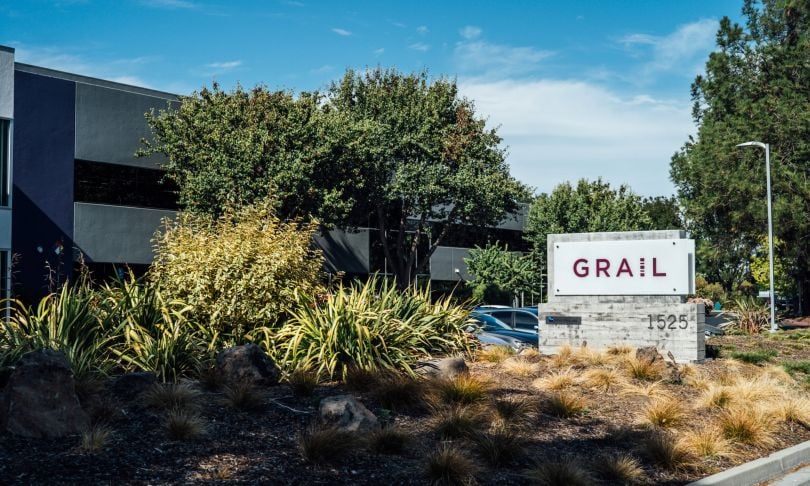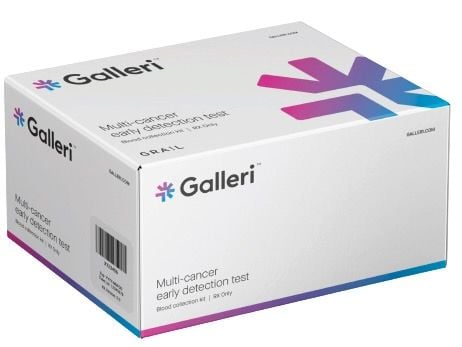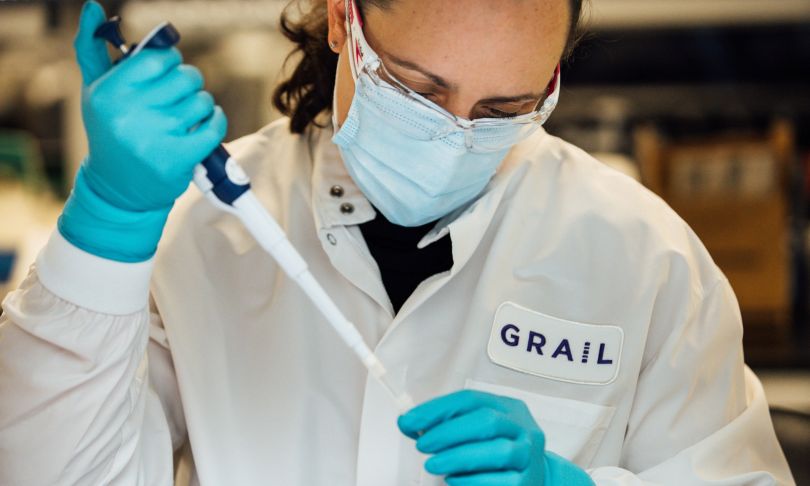If one were to print out a human genome on paper, it would fill 130 books and would take 95 years to read in its entirety.
“It would be monotonous reading, honestly, because you only have four letters of the alphabet — ‘A,’ ‘C,’ ‘G’ and ‘T’ — and you’re reading them for close to a century, trying to find any patterns quickly,” Amoolya Singh explained. “And let’s not even get started on all the paper wasted!”
No one, including Singh, has the capacity to unravel the recipe for human life, one letter at a time. At GRAIL, the senior vice president of data science and chief scientific officer leverages AI to accomplish this extraordinary feat — all in an effort to detect a signal shared by multiple cancer types at an early stage.

Singh explained that cancer is considered a disease of the genome, which is why genomic research is central to the company’s operations.
“Each cell has machinery that protects and keeps the DNA blueprint pristine,” she said. “In cancer, that machinery starts to get corrupted, and then these glitchy cells overgrow and evade the body’s natural cleanup and turn cancerous.”
She added that AI can identify genomic patterns very quickly while determining the difference between DNA from healthy and cancerous cells in the body. The technology can also find the best way to store DNA’s biological information in a computer so that it can be analyzed — a process referred to as “representation learning” — and can even reason about connections between seemingly unrelated observations and suggest these connections to scientists as hypotheses that can be tested or ruled out in a lab.
AI can identify genomic patterns very quickly while determining the difference between healthy and unhealthy DNA.
These three principal subfields of AI — learning, representation and inference — drive GRAIL’s multi-cancer early detection test, Galleri, which can detect a signal shared by over 50 types of cancer.
With the creation of Galleri, Singh feels that the company is helping shape the future of cancer screening. Having a fuller understanding of early-stage cancer will have a massive impact on the world’s population, including those who are often left out of the conversation.
“It’s well-known that even when there are no underlying genetic differences between people, the outcomes for cancer are much worse for minorities and underserved communities,” she said.
By partnering with various organizations, such as the U.K.’s National Health Service, the company aims to understand how cancer progresses in individuals of all socioeconomic backgrounds.
“Having grown up in a developing country, I find this aspect of equity incredibly inspiring, and I really hope we can continue to act on this,” Singh said.
Below, Singh explains how GRAIL’s Galleri test works and the impact it has on cancer detection.
ABOUT AMOOLYA SINGH
In addition to holding a bachelor’s degree in biology and computer science from Carnegie Mellon University, Singh earned a master’s degree in computer science and a Ph.D. in computational biology at the University of California at Berkeley. She completed her postdoctoral fellowship at the European Molecular Biology Lab in Heidelberg, Germany, and finished a computational and life sciences fellowship at Emory University in the fields of comparative genomics and metagenomics, population genetics and experimental evolution.
At GRAIL, Singh oversees the research department comprising 80 scientists trained in computational biology, molecular biology, machine learning and statistics, who analyze the company’s lab data and develop computer models that predict whether or not a blood sample might have a cancer signal. She also oversees the organization’s overall innovation strategy, which is an element of the job she finds especially exciting. “The research of today is hopefully the product of tomorrow,” Singh said. “Part of our work is helping ideas come to life in the real world, which I very much enjoy.”
It comes down to two simple principles that underlie the Galleri test: DNA shedding and methylation.
So, what’s DNA shedding? All cells in the body shed small amounts of DNA into the bloodstream as they die, and this is happening all the time. And cancer cells, if present, also release DNA, so you end up with a mixture of DNA in the blood.
Now, how do you know if the DNA came from a cancer cell or a healthy cell? That’s where methylation comes in. All living cells, all the way from bacteria to squids, Komodo dragons, human beings and pine trees — they all selectively mark their DNA at certain locations, which signals which sections of the DNA to turn on or off. In cancerous cells, methylation becomes abnormal. Methylation patterns also contain information about the tissue type or organ associated with the cancer signal to help healthcare providers determine next steps.

On what makes the Galleri test different:
There are four major single cancer screens for breast, lung, cervical and colorectal cancer recommended as standard of care in the United States, and most of these screening tests are looking for some type of abnormal cell, either visually through imaging or from a tissue sample. The Galleri test is different in that it’s not looking for specific cells. You don’t have to either look at cells through an imaging modality or take cells out of the body. It’s actually just looking for this abnormal DNA that’s shed in the blood. And because the blood circulates throughout the body, you can gather information from all over the body through the blood, so you don’t have to look at this particular organ or that particular organ.
The four cancers that I mentioned already have well-recommended screening guidelines, and they continue to be screened in that way. But the Galleri test detects a cancer signal shared by more than 50 cancer types including more than 45 cancers that do not have recommended screening. Galleri is noninvasive, used in addition to recommended cancer screening, and if a cancer signal is detected, needs to be followed up by a doctor for an actual diagnosis.
DATA DRIVES PROGRESS
GRAIL is currently conducting a study in conjunction with the U.K.’s National Health Service. The company has enrolled more than 140,000 people from a wide range of demographic and socioeconomic backgrounds to gauge the test’s effectiveness in accurately identifying cancer. Singh explained that the company uses the large data sets from trials, such as this one, to refine future versions of the Galleri test. “The more data you have, the better the method gets,” she said.

On GRAIL’s impact:
As a scientist, I’m excited to have tools to detect cancer earlier, as that sheds light on the origins and the progression of the disease. People have been thinking about this for over a century, and hopefully it will lead to better and safer therapeutics. Before there were tests like this, cancer was typically diagnosed at much later stages when symptoms presented. That limits what you can observe about the cancer, because you’re at the moment of diagnosis or after, and your observations of that person or that patient may not generalize. And therefore, the way that you treat it and how well your treatment will work in other individuals may also not generalize.
I’m very excited to see the whole progression of cancer rather than a narrow, late slice of it, because then we can learn more about the disease, which will lead to more timely and effective treatments.
Like many others, I had a family member who was diagnosed with cancer and passed away last year. I remember thinking to myself when I was considering joining GRAIL, “If I can help even one family not go through what my family just went through, by finding cancer early when it can be cured, what better way is there to spend my time?” I’m very excited to be here and contribute to this mission.







